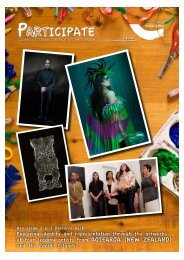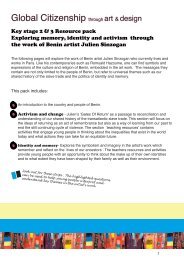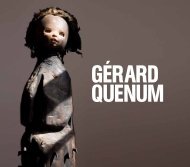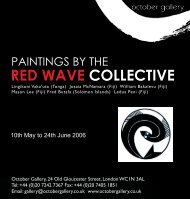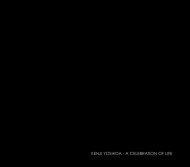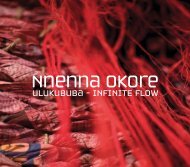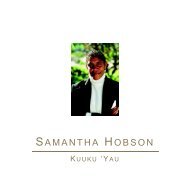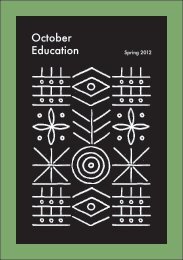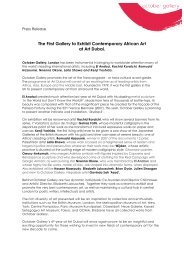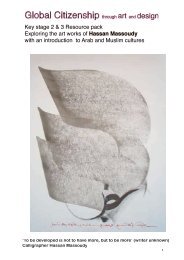Create successful ePaper yourself
Turn your PDF publications into a flip-book with our unique Google optimized e-Paper software.
PS: You’ve moved around a lot in your life – in what ways have your changing environments<br />
affected your work? How do you feel your work connects with place?<br />
NO: I feel the natural environment here connects more for me than the social or cultural<br />
environment. But I’ve found a lot of similarities and references to my own sensibilities from a<br />
Nigerian perspective – with the landscapes here, which are very familiar to me. I connect with<br />
things like random piles of objects – this brought back memories of Nigeria – things like dilapidated<br />
buildings, nests, the way trees fall – things like this have had an impact on me, resonating with<br />
what I already know. But in terms of picking things up in my work – no, not very much.<br />
PS: What about your work with discarded materials – has living in the United States affected your<br />
perspectives on consumption?<br />
NO: Absolutely. When I moved out here and found in abundance these wasteful cultures and<br />
wasteful outlets of materials – that got me thinking and even pulled me in the direction of how<br />
these materials are so valuable where I come from – of how they mean so much, and are not<br />
wasted as you find them here. Although here there is a huge recycling culture, a recycling<br />
industry, it isn’t with the same intensity – it’s not seen in the same light – there is not so<br />
much value for the materials – they wouldn’t be recycled so instantly as they would in poorer<br />
communities in Nigeria. So yeah, I think I sought to question why there was so much wastefulness<br />
in societies out here, and to investigate the patterns of consumerism where people buy food<br />
without even being able to eat it all – there’s so much out there for people to have, and they’re not<br />
even in dire need of these things. Drawing on what I’ve seen out here, it may have an impact on<br />
the way my work has transformed, especially my attitude to recycled materials. Reclamation and<br />
recycling became a huge part of my work – reclaiming, reforming, reconditioning, reconstructing<br />
what was no longer considered useful. I was trying to find meaning for them, to find ways of giving<br />
them value, especially coming from my background.<br />
PS: Can you talk about your development as an artist? How did you begin working with these<br />
materials? What were the key events that shaped your practice?<br />
NO: I’ve always been interested in creating. I started getting a sense of direction, of space and<br />
sculpture especially, when I came into contact with El Anatsui. I was really inspired by his works<br />
and his approaches to art, and I was very privileged to mentor and work with him for a year<br />
between 2000 and 2001. He was my teacher in my undergraduate programme. My exposure to<br />
him really helped me to begin to appreciate work from a spatial perspective. Before then I studied<br />
painting, so I was more into a two-dimensional, compositional approach to art. When I met El and<br />
spoke to him a few times, we would talk about art, and he always had very insightful feedback<br />
on my work, which helped me broaden my scope beyond the canvas, beyond the paper, and ask<br />
how can I bring my environment and my other experiences into the work. That was like my turning<br />
point, where I started to think about making sculptures and installations, and then I looked around<br />
me, and saw there was so much around that could be transformed into art. I started picking up<br />
leaves, sticks – I would put it together and he would do a critique for me of the works I was doing<br />
independently. I started to feel so comfortable with this that I decided to go to graduate school<br />
and get a degree in this, because it was something that I had so much affinity and drive for, and I<br />
went to graduate school and I really loved it – I found so much passion for sculpture in a way that I<br />
never had bothered to explore in the past. Also coming upon the abundance of waste – that was a<br />
helping point for me so I took it and ran with it and I’ve been running with it since then.<br />
22



